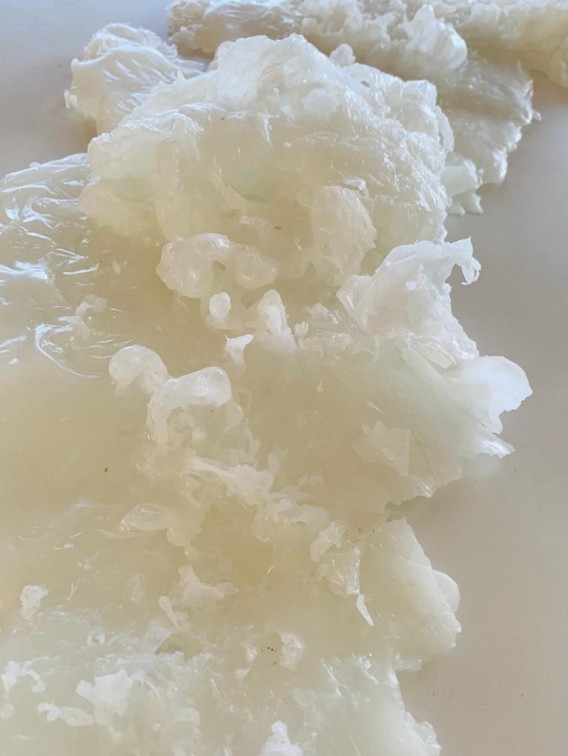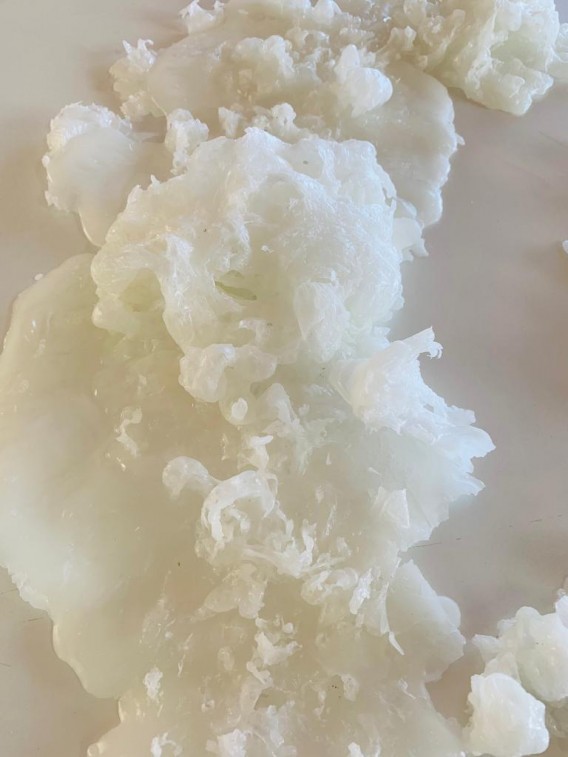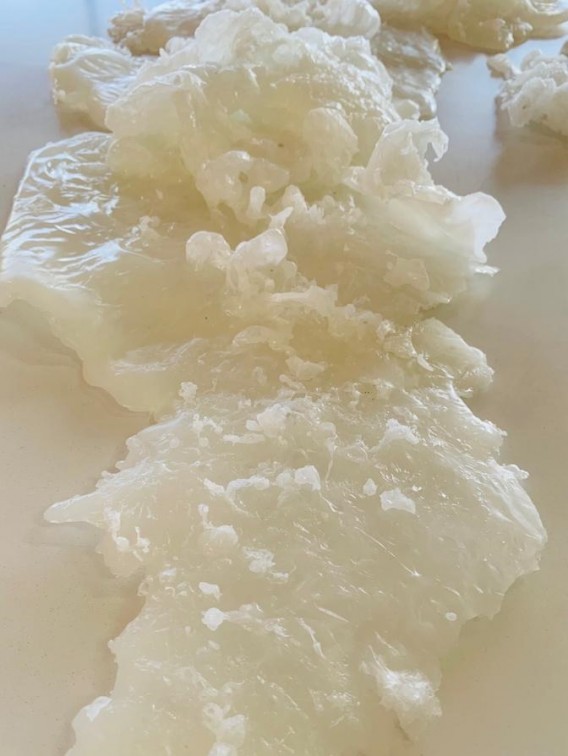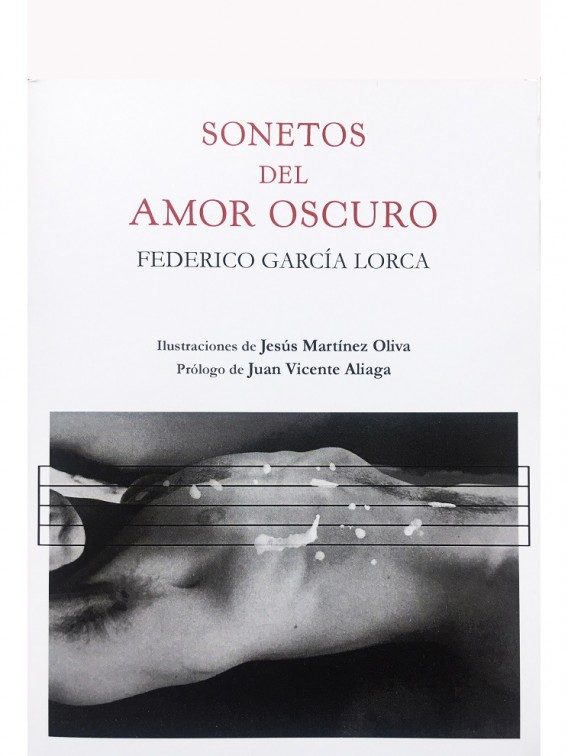“Oh secret voice of dark love” is a visual journey undertaken by Jesús Martínez Oliva taking as a starting point the famous collection of poems by Federico García Lorca, Sonnets of dark love. The exhibition project presents two interconnected strata resulting from several forays into the ins and outs of Lorca’s homosexual poetics. On the one hand, it includes the illustrations conceived for the eleven sonnets of the aforementioned collection of poems for the edition made by the Flores Raras publishing house in 2018, on the other, a sculptural installation made expressly for the present exhibition.
Lorca began writing these sonnets in Valencia in 1935 during his visit for the performance of Yerma at the Teatro Principal. The tortuous journey until its full publication, fifty years after its creation, was one of the most notable chapters of cultural homophobia in our country. The clear homosexual inspiration of the collection of poems made Lorca himself harbor some doubts about the convenience of publishing it during his lifetime; shortly after, his execution and the Franco dictatorship did the rest. It was not until the return to democracy in the Spanish State at the end of the last century when they finally saw the light. They appeared on ABC newspaper in 1984, in a special issue dedicated to this previously unpublished work in our country. Of course, suffering mutilations from its editors and the family who decided to delete the adjective “dark” in the title, leaving it in a generic Love sonnets (sic). In turn, all references to homosexuality were eliminated in the analyzes of the work that accompanied the poems. The “dark” was interpreted as a reference to the martyrdoms of love, the love that kills or causes death or the love of the mystics, ignoring at all times that this love is a veiled allusion to homosexuality.
From the inexhaustible conceptual and literary richness of these sonnets emanate the illustrations presented here that precisely affect the homosexual specificity of said love. These make up a set of visions and feelings of diverse signs ―sometimes opposite― about “dark love”, ranging from the suffering of lacking the freedom to love, to the fear of social persecution or the stinging pain caused by unrequited love, to expressions of a markedly homoerotic burning sexual desire. In these eleven collages there are loves hidden in the darkness of the night, images of rebuking and threatening crowds, martyrologies of heartbreak, but also the cult of the beauty of statues, dahlias sent to the lover, bodies destroyed after the passion of love, dove and tiger like lovers given over to a devouring passion, orgasmic blood spilled, aromatic lilies on the waist, snowy melody scattering flakes on the beauty of the lover’s torso, gardens with their secret corners as propitious settings for passion and homosexual pleasure…
We are faced with a love that cannot be expressed openly on a social level but that has a “secret voice”, underground, whose torrent seems unstoppable for an incipient “homosexual culture”, a paradox that comes to condense the experiences around homosexuality in the Spain of the late 1920s and early 1930s and more specifically in the area of the literary generation of ’27. Lorca’s language is interspersed with zigzags, with hiding and showing, with a saying veiled behind encrypted metaphors of surreal cut, sharing with his generation companions some codes and sensibilities that can only be “understood” after the experience of the closet.
The collection of graphic works is accompanied by a central piece as a sculptural installation in which, on a blanket of ash, a symbol for Lorca of the burned voice, or the silenced voice (it can also be connected with homosexuals burned at the stake by the Inquisition), three pieces are presented (Duel of bites and lilies, Drink spilled blood on honey thigh and White shudder) focused on iconography related to the Lorca imaginary of exaltation of the ecstasy of homosexual pleasure.
____________________________
Jesús Martínez Oliva is a professor of sculpture at the Faculty of Fine Arts of the University of Murcia and an artist. He has investigated both theoretically and artistically the problem of articulating identities from the perspective of gender and sexuality. He is the author of the book The discouragement of the warrior, representations of masculinity in the art of the 80s and 90s, CENDEAC, 2005, as well as numerous essays and research articles (https://um-es.academia.edu/JesusMartinezOliva).
As an artist, he has shown his work in various individual exhibitions (Discontinuous fluids, Espai 13 of the Joan Miró Foundation, Barcelona, 1994; Jesús Martínez Oliva. Restraints, La Gallera, Valencia, 1998; Jesús Martínez Oliva, Sala Verónicas, Murcia, 2005; The School of Fear, Pepe Cobo, Madrid, 2010), as well as collectives (Fallen Heroes. Masculinidad y representation, Espai d’Art Contemporani de Castelló, 2002; The Gendered City. Urban Space and Gender Construction, Unit 2 Gallery, London Metropolitan University / Palacio Aguirre, Cuenca, 2004; Everywhere, politics of sexual difference in art, CGAC, 2009; The Fear Society, Pavilion of urgency, 53rd Venice Biennale, 2009; Feminist genealogies in Spanish art: 1960-2010, MUSAC, 2012; Our desire is a revolution, Images of sexual diversity in the Spanish state, Centro Centro, Madrid, 2017; Troubled Times. Stories and microhistories in the IVAM collection, IVAM, Valencia, 2019; Choreographies of gender, CCCB, Barcelona, 2019).




